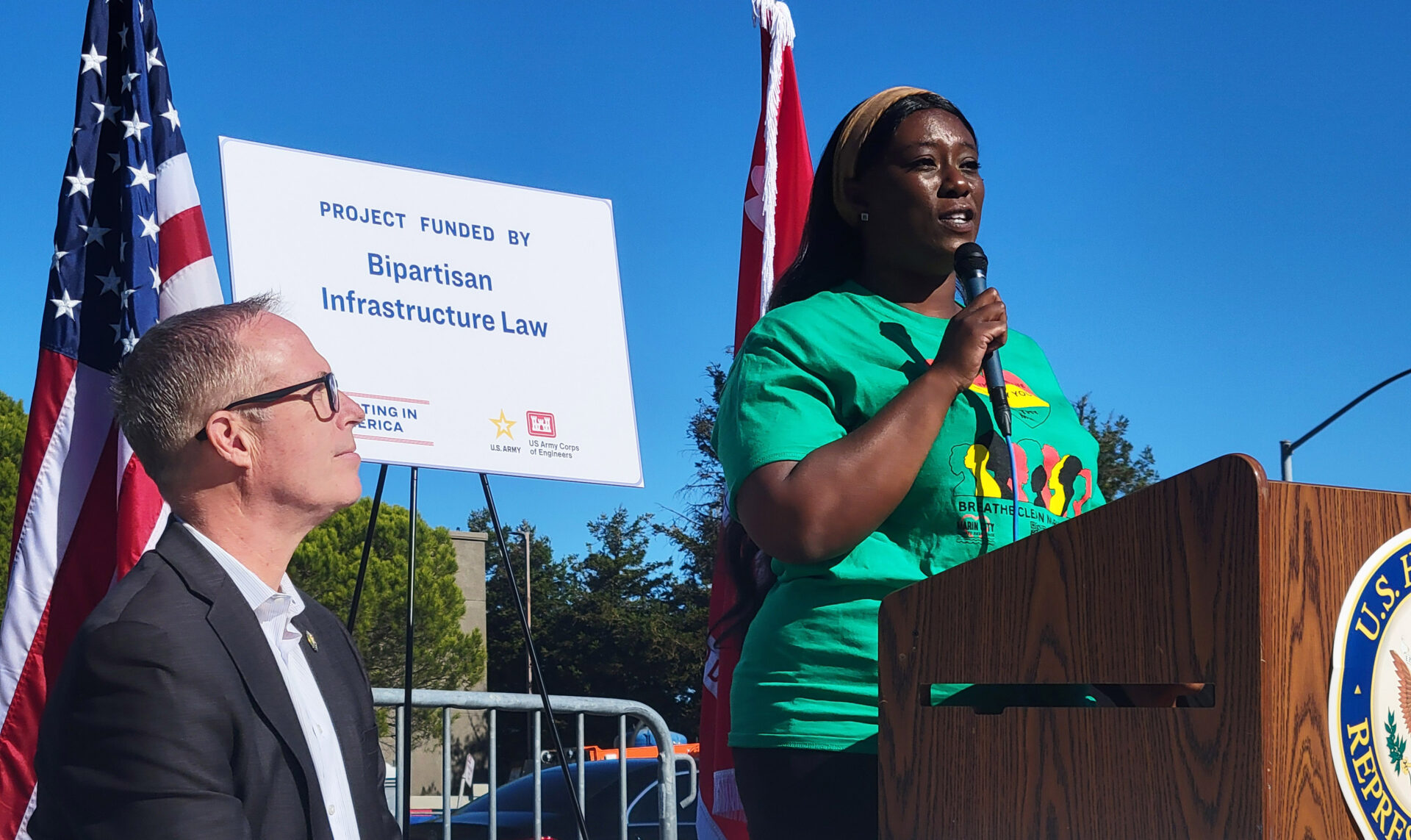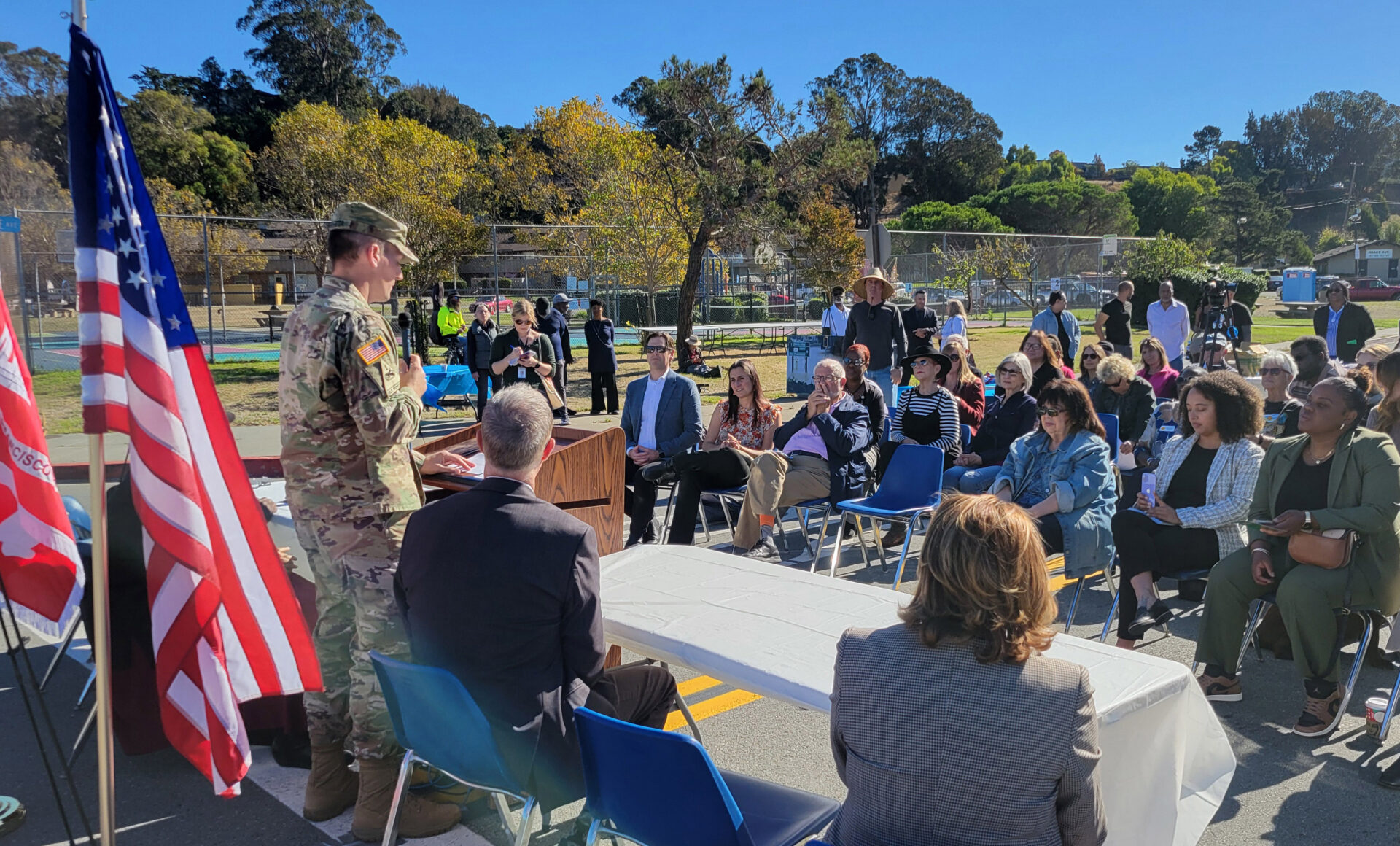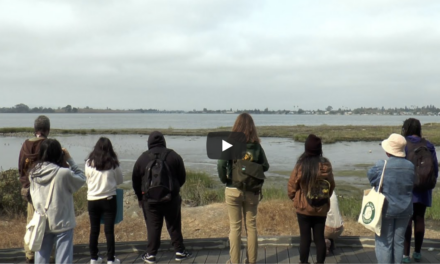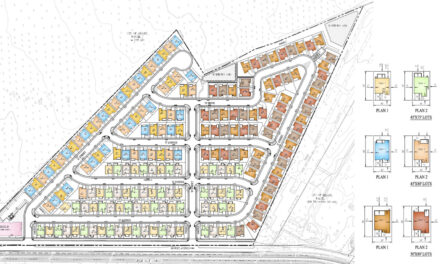Feds Shoulder Marin City’s 80-Year-Old Drainage Problem

Resident Chinaka Green and Congressman Jared Huffman at the press conference. Photo: Brandon Beach, USACE
In Marin City, floodwaters have been a chronic reminder of the community’s long-standing neglect — but a federal project could finally break that cycle. Marin City was selected to be one of 12 communities across the country who will participate in a Congressional Pilot Program led by the U.S. Army Corps of Engineers, for which the federal government will cover 100% of the cost of a flood-reduction project in Marin, up to $13.5 million.
At a kick-off event on November 7 at the corner of Donahue and Drake, residents and activists shared their experiences with 80 years of constant flooding.
Donald Smith has lived in Marin City for 76 years. “There used to be a barber shop right over there named ‘Clarence,’” he said. “You had to have a weather map to go get a haircut because you don’t know if it’s going to be flooded out or not.”
Chinaka Green, associate director of Marin City Climate Resilience, described having to park in Sausalito and walk home after the Marin City exit flooded. “My son and I were pretty tall, and the water was to our knees,” she said. She walked alongside other families, who had to carry their small children on their shoulders. “We do deserve better here in Marin City. We don’t deserve to continue to have to walk through contaminated flood waters.”

Timothy Shebesta, Commander of the USACE San Francisco District, speaks to the community. Photo: Brandon Beach, USACE
In the background, a construction crew installed a temporary drainage system on Donahue St. to relieve flooding in the short-term; the Army Corps project will develop a more permanent solution.
Congressman Jared Huffman described the program as a “shining star of good news.” “Can everyone hear me over the construction noise?” he laughed. “We want to hear more construction noise in this community.”
He recognized that the primarily Black community, founded during World War II as workers migrated from the South and Midwest to build ships in Sausalito, has been long neglected. “The community qualifies for reparations and should be given high priority due to the historic institutional racism that residents have suffered for generations,” he said.
Funding for the pilot comes from the Bipartisan Infrastructure Law passed by Congress in 2021, and authorized under Section 165(a) of the Water Resources Development Act of 2020. This new authorization allows the Corps to pursue small civil works projects and to pay 100% of the cost, rather than requiring local cost sharing.
Next, the Army Corps will coordinate with the Marin Community Services District on a project management plan and partnering agreement before officially kicking off work on a feasibility study in 2025. According to the Corps, the planning team will then explore a suite of alternative solutions to the city’s flooding issues with community input driving the process.
Other Recent Posts
Gleaning in the Giving Season
The practice of collecting food left behind in fields after the harvest is good for the environment and gives more people access to produce.
New Study Teases Out Seawall Impacts
New models suggest that sea walls and levees provide protection against flooding and rising seas with little effect on surrounding areas.
Oakland High Schoolers Sample Local Kayaking
The Oakland Goes Outdoors program gives low-income students a chance to kayak, hike, and camp.
Growing Better Tomatoes with Less Water
UC Santa Cruz researchers find the highly-desired ‘Early Girl’ variety yields more tomatoes under dry-farmed conditions.
Santa Clara Helps Homeless Out of Harm’s Way
A year after adopting a controversial camping ban, Valley Water is trying to move unsheltered people out of the cold and rain.
The Race Against Runoff
San Francisco redesigns drains, parks, permeable pavements and buildings to keep stormwater out of the Bay and build flood resilience.
Learning the Art of Burning to Prevent Wildfire
In Santa Rosa’s Pepperwood Preserve, volunteers are learning how controlled fires can clear out natural wildfire fuel before it can spark.









